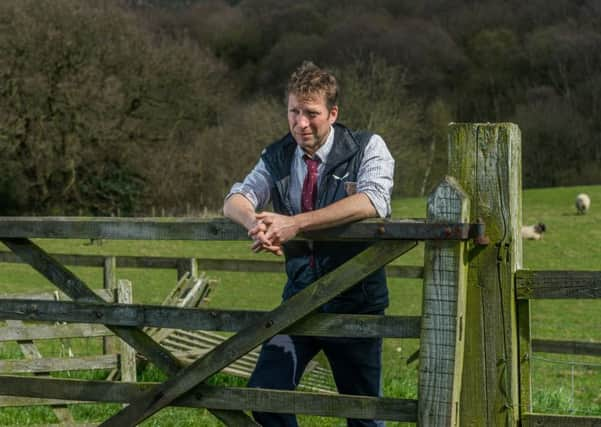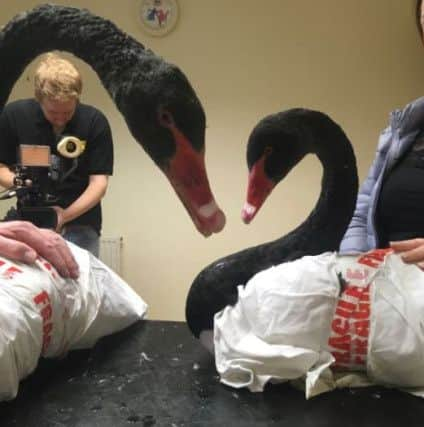Swans in the waiting room for Julian


Kirsty and her two swans, both wrapped in clothes fastened securely with masking tape (to avoid damage to their wings on the journey), made an unusual sight in the waiting room.
The graceful bird had been struggling with a recurrent swelling under her beak. Food was getting impacted under Bella’s tongue, making it difficult for her to eat. Kirsty was having to keep the swans in a shed, away from grass, to prevent it from getting worse.
Advertisement
Hide AdAdvertisement
Hide AdShe told me that she had been doing some research and that, “in the olden days, people would put a pebble in and sew up the hole”. This sounded an unlikely thing to do in modern veterinary practice, but it gave me an idea as to what the problem might be.


The description of placing a pebble and then sewing over the top, suggested that there must be some kind of pouch under the tongue that was filling up with food. I had no intention of placing any pebbles inside it, but if I could safely place the swan under anaesthetic and identify the edges, I felt sure I could suture the pouch closed.
I examined Bella as best I could and, sure enough, there was a pocket of impacted food under her tongue. The anaesthetic went smoothly and with Bella lying still, it was much easier to see what was going on. Under the base of her tongue was, as expected, a pouch of baggy membrane, now free of food, but sure to fill up again shortly.
I managed to place sutures and close off the orifice, just like stitching across the pocket of a pair of trousers. In the same way that the trouser pocket wouldn’t take a set of car keys, Bella’s tongue wouldn’t get blocked up with grass.
Advertisement
Hide AdAdvertisement
Hide AdI felt happy that we’d achieved some success with this unusual condition, but only time would tell.


The nurses and I hoped we would have the same success in reuniting an elderly, lost cat with her owners. The geriatric cat came to us after she was found wandering around in someone’s garden. She didn’t have a microchip and, as is often the case, the help of the local vet had been sought. “Do you recognise this cat?”
But nobody recognised her and ‘Gwenny’ had been with us for several days. It looked as if she would be finding a home with one of our staff.
But the ‘share’ button of our Facebook page had extended the story of Gwenny as far as Nether Poppleton. A family who had lost their cat six months previously (“we think it climbed into a removal van”) had seen Gwenny and sent photos to us. A collection of optimistic vets, nurses and camera crew were all convinced the tabby cat in our kennels and the tabby cat from Nether Poppleton were one and the same.
Advertisement
Hide AdAdvertisement
Hide AdWe all waited with excitement for the emotional reunion. Gwenny stalked along the top of the reception desk, but without a glimmer of recognition. The husband, wife and five-year-old son Alfie were silent. They shook their heads in unison. “That’s not our cat.”
Much as we all tried to persuade them that she must be their cat (I tried to convince them that six months of sleeping in a bush would surely mute the colours somewhat), it clearly wasn’t a match.
“If you can’t find her owners by next week, let us know and we’ll have her,” they said as they left. No need, though. Gwenny has a queue of potential new owners, fighting it out!